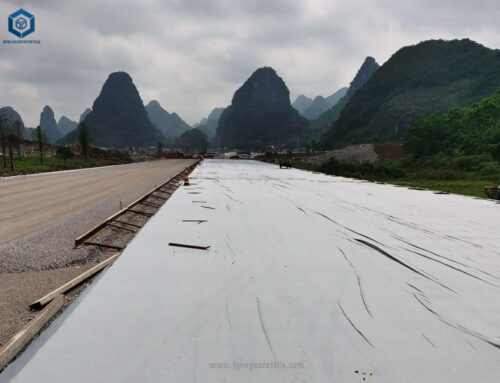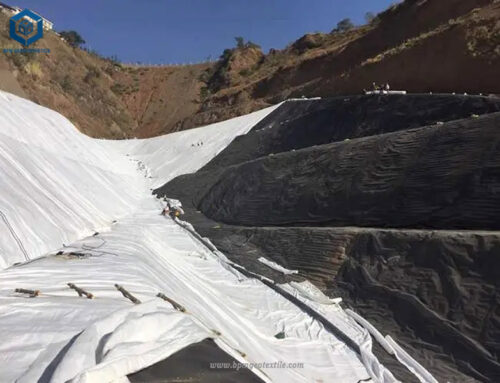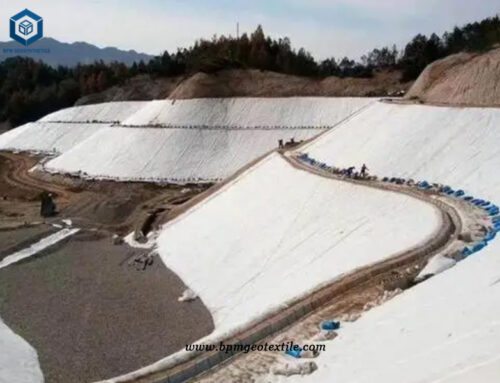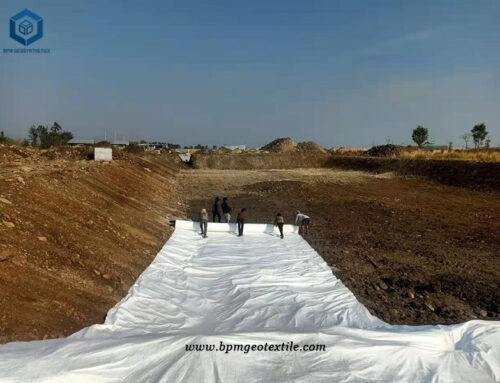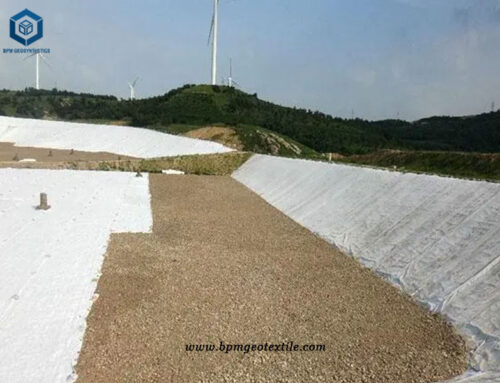Staple fiber geotextile fabric, also known as needle punched geotextile fabric, is the geosynthetic textile material widely used to increase soil stability, provide erosion control or aid in drainage. BPM brand staple fiber geotextile fabric is made from a synthetic polymer such as polypropylene, polyester, polyethylene or polyamides fiber and processed by woven, needle punched or heat bonded methods. The staple fiber geotextile fabric is the ideal material for civil engineering applications such as roads, harbors, reservoirs, canals, dams and many others retaining construction to improve soil stability, provide erosion control or aid in drainage.
Our Malaysia Partner is CHINA COMMUNICATIONS CONSTRUCTION (CCCC) SDN. BHD Who is Constructor for East Railway Construction project. They are inquiry Stable fiber geotextile of specification for 400gsm, and The Thickness up to 3mm. Break strength up 12.5, CRB Burst Strength up 2.1, Tear Strength up 0.33, Total they are requiring 5825573 square meters. and divided to 8 Section for planned quantity, for first section they are inquiry for 848970 square meters. At the beginning the CCCC company visit BPM geomembrane company, BPM geotextile 16000 square meter factory and advanced production line of geomembrane and geotextile gave them professional impression. before we sign agreement, they need we offer product brochure, ISO Certificate, SIRIM Certificate, Test Certificate, Project References and material safety data sheet, all they requirement BPM can offer to them. after we signed the order and accept the deposit, consider project time schedule, BPM speed up the time supply the Section 1 of 40hq*18 container within 20 days to catch up for required deadline.
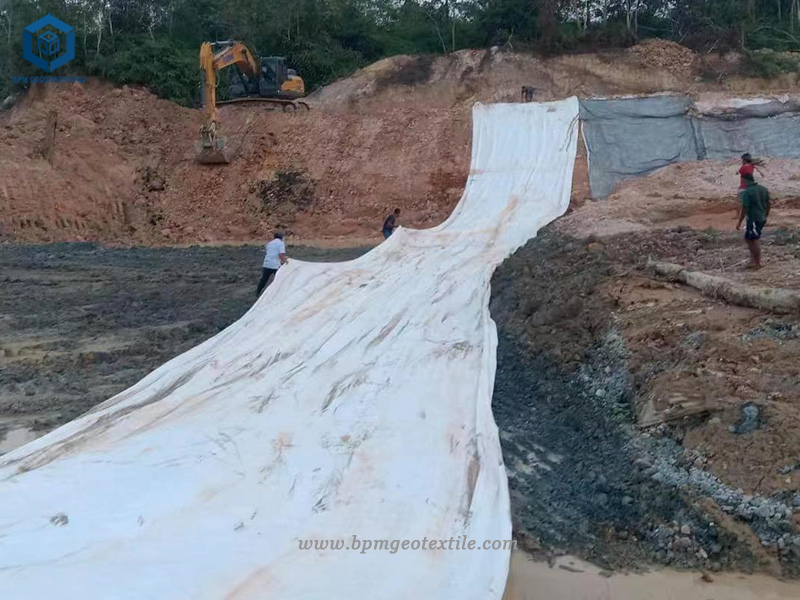
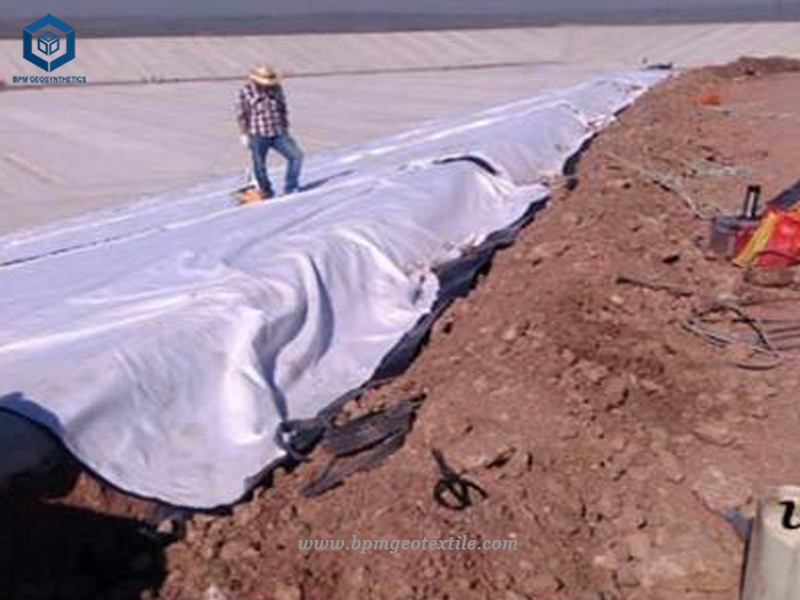
The East Railway Construction Project is the largest infrastructure project in Malaysia, envisioned as the backbone for economic development and growth along the east coast of Peninsular Malaysia. Stretching 665 kilometers, it will carry freight and passenger rail to improve connectivity between the east and west coasts of the peninsula. The immediate benefit will be a reduction in travelling time, cutting what is typically a seven-hour journey by road between Kota Bharu and the Klang Valley to only four hours using the railway. The long-term potential leverages tourism to the east coast as well as industrial, commercial, and logistical growth along the railway’s major corridors. With the input of ERE Consulting Group’s (a member of Aurecon Group) environmental and rail engineering experience, and in-country experience, we were appointed to undertake the environmental and social impact assessment. This role was to optimize the railway alignment to conserve important wildlife habitats and landscapes as well as minimize disruption to communities. In the middle of Peninsular Malaysia, there are many mountains with spines in the direction of the peninsula, which divide the peninsula into three geographical regions: the eastern coastal belt (eastern belt), the central mountainous area (Raub suture belt) and the western coastal belt (western belt).
The macro-topography of this project area is slightly oriented to the southeast. There are mountains in the north-south direction distributed in this area. The landform of the area is low hills with a large drop. There are many “V-shaped and U-shaped valleys along the line, and the construction site is narrow. The surface vegetation grows, and there are large rubber plantations, palm plantations and tropical forests.
The unfavorable geology distributed along the line mainly includes soft soil, faults, folds, joints, synclines, fissures, anticlines, karst and rock bursts. Among them, granite is multi-spherical weathering, limestone joints and fissures are multi-spherical weathering, and limestone joints and fissures often form dangerous rocks, which are prone to collapse and rockfall. The surface water along the line mainly exists in river valleys and lakes, and there are many rivers along the line. Affected by the monsoon, during the heavy rain season, the water level of the river will rise sharply, causing flood disasters. Considering the anti-filtration function, drainage function, isolation function, reinforcement function and anti-seepage function of BPM Staple Fiber geotextile, it can be widely used in railways, highways, sports venues, dams, hydraulic structures, tunnels, coastal roads, and reclamation, environmental protection and other projects.
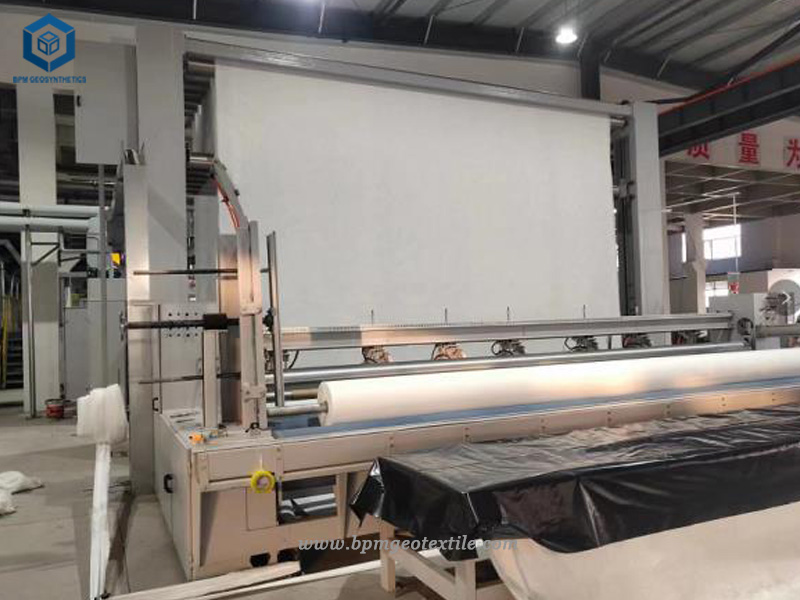
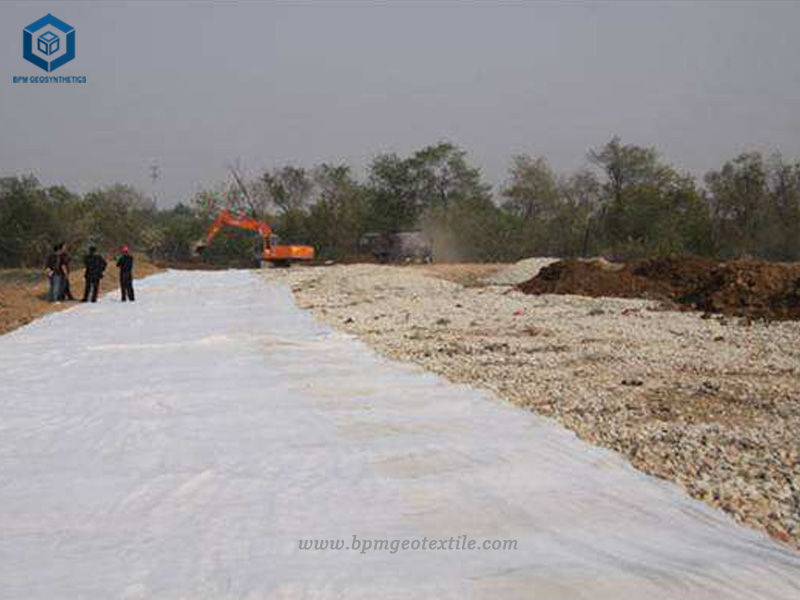
BPM Staple Fiber Geotextile Features
1·Filter Function. Reverse filtration refers to keeping the soil material under the action of osmotic pressure from losing while allowing the liquid to pass through. Polyester staple spunbonded needle-punched geotextiles can replace traditional gravel filter layers. The staple fiber geotextile has the advantages of reducing engineering quantity, convenient construction and high speed. The isolation layer between artificial fill, rockfill or material field and the foundation, isolation between different frozen soil layers, filtering and reinforcement effects
2. Drainage function. Drainage refers to the use of the permeability of materials to allow water to be discharged from soil or geotechnical structures through its permeable channels. Polyester short filament spunbonded needle-punched geotextiles can replace traditional drainage bodies such as gravel or concrete pipes. It is easy to construct, low in price and reliable in quality.
3 Isolation function. Isolation is to prevent the mixing of adjacent different media. The use of staple fiber geotextile for isolation between different media can maintain the integrity and stability of each media and structure.
4 Reinforcing function. Reinforcement is to place materials with a certain tensile strength in the soil to improve the performance of the soil. Use polyester short filament spunbonded needle-punched geotextile as reinforcement material, which can improve the strength of soil and the purpose of stability, convenient construction, better effect.
5 Anti-seepage function. Anti-seepage is to prevent liquid seepage and loss. The synthetic material of staple fiber geotextile and geomembrane is used as the anti-seepage layer, which is economical, durable and pollution-free.
About BPM
BPM manufactures and wholesales many types of effective and states of the art geotextile, geomembrane, and other geosynthetics to over 36 countries. BPM geosynthetic products are widely used across a variety of industries including waste containment, water containment, aquaculture, industrial project, energy project and mining projects, etc. BPM main customers are from Australia, France, Sweden, UK, Hungary, New Zealand, Poland, Mexico, Ecuador, Brazil, Pakistan, Bangladesh, Thailand, Vietnam, Malaysia, Indonesia, Singapore, Philippines, Sri Lanka, India, UAE, Saudi Arabia, Qatar, Kenya, etc.
BPM is not only manufacturing best quality geosynthetic products but also providing professional design and installation service. OEM, ODM, custom development and fabrication are also available. If you have any questions or inquiries, please fill and submit the following form, we will reply as soon as possible.

